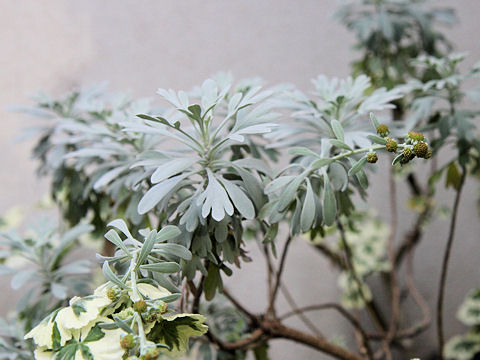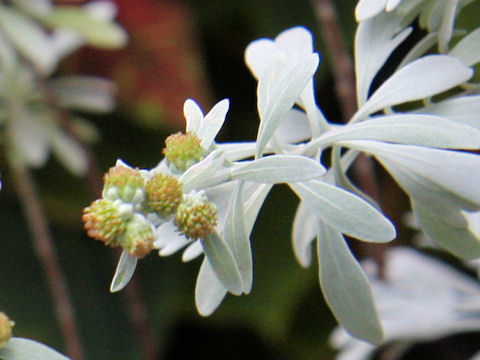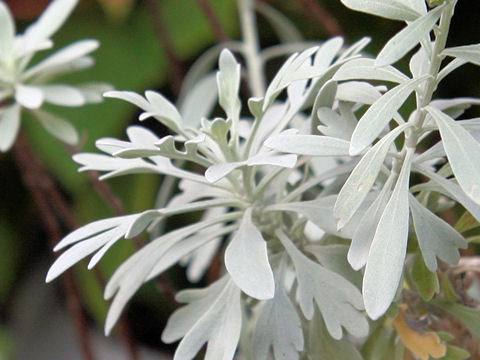 |






|

|
íªÌ§AgJñÈì©çäpAtBsAìɪzµÄ¢Ü·BCÝ̲NXèÊÈÇɶ¦A³ÍRO`WOZ`ÉÈèÜ·BsÍæª}µÄPóÉÈèÜ·BtÍÖç`ÅAFÌש¢ÑÉííêĢܷBPP©çPQ²ëA}æÉóÔð¾µA©FĬ³ÈªÔð穹ܷBäpØêÅÍu蘄ävAêÅÍuueifu rong jujvÆÄÎêÜ·B
|

|
LNÈNrbRE®ÌíάáØÅAw¼Í Crossostephium chinenseBp¼Í èܹñB
|

|
The "Moku-byakkou" (Crossostephium chinense) belongs to Asteraceae (the Aster family). It is an evergreen shrub that is distributed southward from the Tokara Islands of Kagoshima prefecture in Japan to Taiwan, Philippine and southern China. This shrub grows on coastal raised coral reefs and can reach 30-80 cm in height. It is much branched and forms umbrella bush. The leaves are spatulate and covered with white fine hairs. The racemes are borne on the terminal branches and bloom small yellow flowers heads from November to December. In Taiwanese Chinese, it is called "蘄ä" and "ue" (fu rong ju).
|

|
ò§ÂsuÔtFX^LOövÉÄA2007N1205úBeB
|


